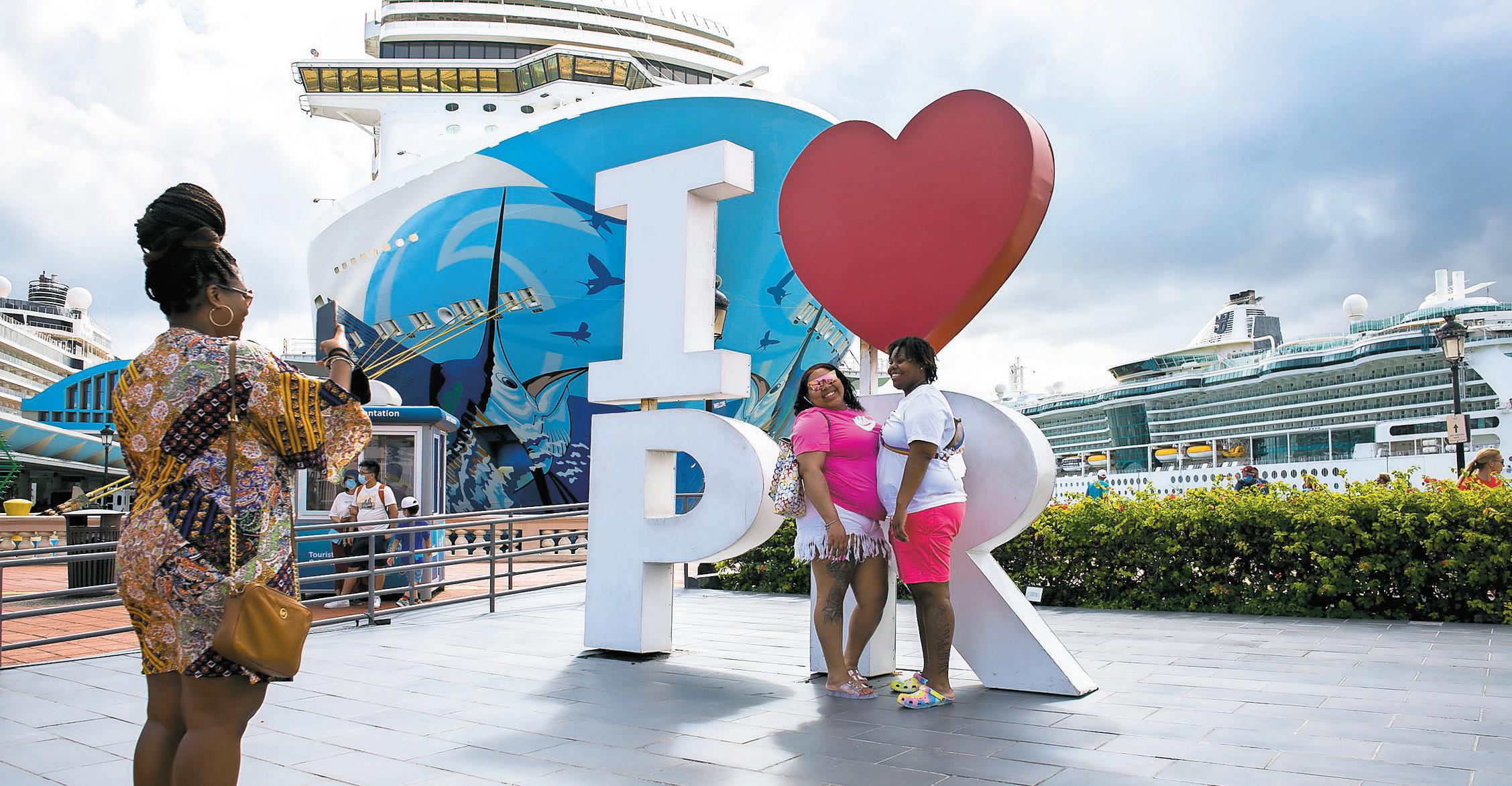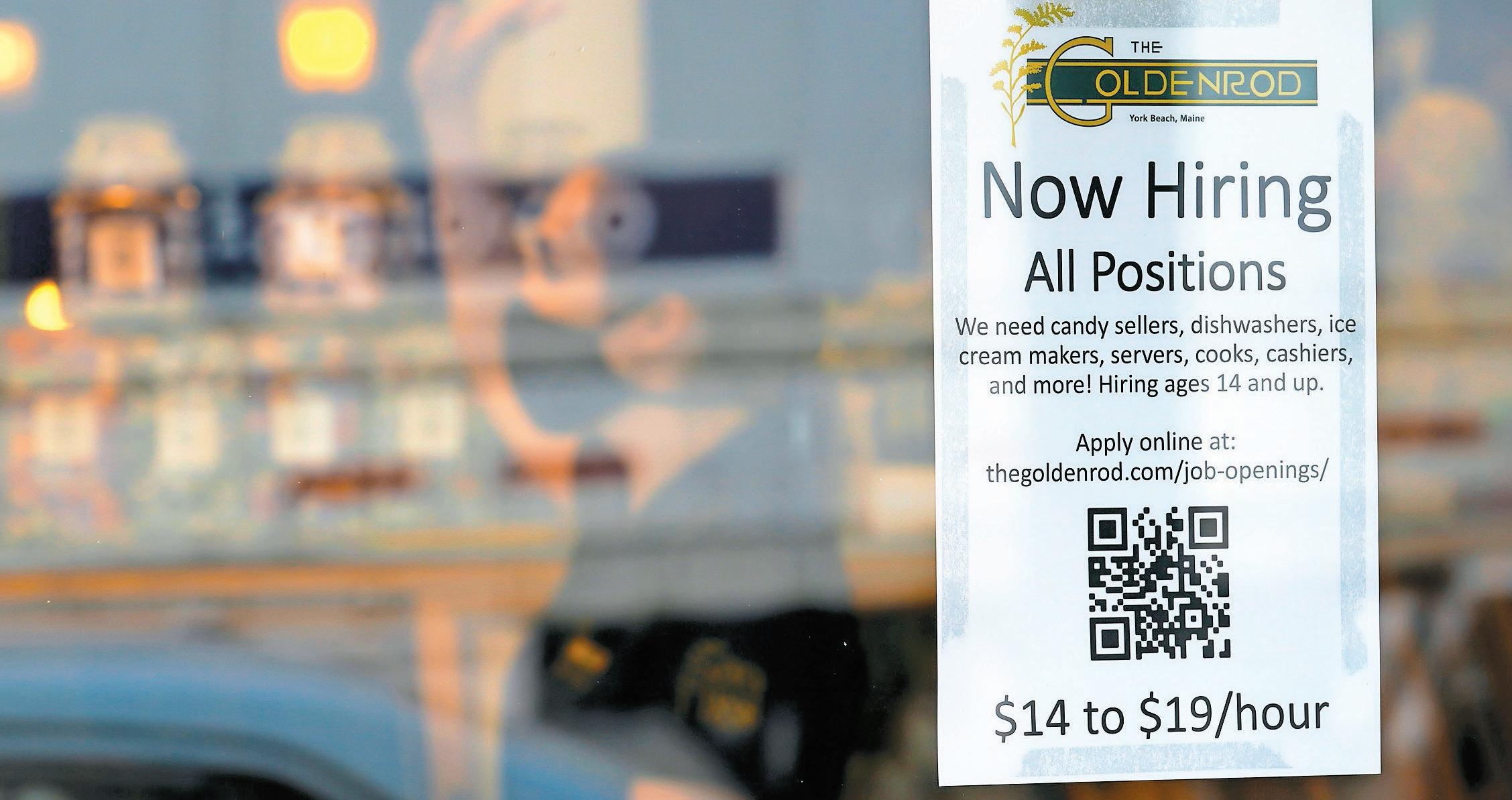
7 minute read
Business as usual for TourisTs
Tourists disembarking at the tourism pier in San Juan. >Josian E. Bruno Gómez / The Weekly Journal
Puerto Rico is ready for tourists to return after hurricane Fiona
Advertisement
The island experienced a relatively quick rebound
Madison Choudhry, Special for The Weekly Journal
Hurricane Fiona, a Category 1 storm, hit Puerto Rico on Sept. 18 causing a domino effect of disruptions to the island. However, three weeks after the hurricane hit Puerto Rico the island is once again welcoming visitors.
Tourism entities, such the island’s destination management organization (DMO) Discover Puerto Rico, are standing in solidarity with those who were affected by the storm while simultaneously letting know the public that Hurricane Fiona was “a setback for us, but not a reset.” Speaking on the lasting effects due to Hurricane Fiona, Discover Puerto Rico’s CEO Brad Dean stressed any conversation about tourism is secondary to a discussion about the human impact of Hurricane Fiona. However, Dean is anticipating a relatively quick rebound compared to Hurricane Maria, a category 5 hurricane which caused the longest blackout in U.S history. “From the visitors’ standpoint, Puerto
Rico’s beaches, restaurants, attractions and accommodations are ready to welcome all,” Dean said. “We are excited by the quick pace of this recovery.” From January through July of this year, Puerto
Rico’s visitor numbers were outpacing the first halves of 2019 and 2021. Visitors were staying longer and spending more, according to Dean. The island was tracking toward a record year of tourism activity until Fiona. Dean’s belief that Puerto Rico is “truly ready to welcome tourists back,” stems from the fact that a majority of tourists arrive and branch out from the San Juan metropolitan area on their trips. “If you’re arriving into the San Juan metro area, you won’t even realize that we had a natural disaster weather event in the last few weeks.” “There was a temporary disruption in San Juan from the hurricane, but less than 24 hours later the Luis Munoz Marin Airport reopened, followed by the airport in Ponce and the cruise ports the following day,” Dean explained.
Discover Puerto Rico reported they commissioned a series of studies measuring the travel intent and the perception left by Hurricane Fiona on tourist. The results indicated that future bookings in short-term rentals decreased during the first week after the hurricane compared to the week before. However, by the second week, they had rebounded and were above the levels before Hurricane Fiona. The studies showed the week before and after the storm, bookings on short-term rentals fell by 2%. However, the second week after the hurricane they reached 11% above the pre-hurricane levels. The result also showed that future hotel bookings did not fall at all, but in fact increased during the week following Hurricane Fiona. José Suárez, chairman of Discover Puerto Rico’s board of directors stated, “While we recognize that many communities continue to face difficulties brought on by Hurricane Fiona, our island has come a long way in the recovery process. We believe it should be a priority to protect the 90,300 jobs generated by the tourism industry in Puerto Rico, which is
In fact, dependent on us receiving a high level of visitors.” A survey conducted by Future hotel Destination Analysts shows bookings did not promising outcome to the tourism fall at all, but in fact industry. It indicates that after increased during the hurricane, 65% of potential the week following travelers still perceived Puerto Hurricane Fiona. Rico as a potential destination. This percentage is lower than what was recorded in March of this year (76%) but higher than the 58% recorded in April of 2021, which is the year the industry broke records in lodging income and room tax revenues. “We trust that our Puerto Rican spirit, which we are all proud of and always celebrate, will continue to open the path toward normality and stability,” Dean explained. “It is up to agencies such as Discover Puerto Rico to redouble our efforts to boost tourism and retain the place we have earned among travelers.” Speaking to individual hoping to help in efforts to assist Puerto Rico after Hurricane Fiona Dean stressed, “There’s no better way to help the people in Puerto Rico than to schedule or continue a vacation.”
Another month of solid U.S. hiring suggests more big Fed hikes
Paul Wiseman – The Associated Press
WASHINGTON — America’s employers slowed their hiring in September but still added 263,000 jobs, a solid figure that will likely keep the Federal Reserve on pace to keep raising interest rates aggressively to fight persistently high inflation. Friday’s government report showed that hiring fell from 315,000 in August to the weakest monthly gain since April 2021. The unemployment rate dropped from 3.7% to 3.5%, matching a half-century low. The Fed is hoping that a slower pace of hiring would eventually mean less pressure on employers to raise pay and pass those costs on to their customers through price increases — a recipe for high inflation. But September’s job growth was likely too robust to satisfy the central bank’s inflation fighters. Last month, hourly wages rose 5% from a year earlier, the slowest year-over-year pace since December but still hotter than the Fed would want. The proportion of Americans who either have a job or are looking for one slipped slightly, a disappointment for those hoping that more people would enter the labor force and help ease worker shortages and upward pressure on wages. The jobs report “was still likely too strong to allow (Fed) policymakers much breathing room,” said Matt Peron, director of research at Janus Henderson Investors. Likewise, Rubeela Farooqi, chief U.S. economist at High Frequency Economics, said she didn’t think September’s softer jobs and wage numbers would stop the Fed from raising its benchmark short-term rate in November by an unusually large threequarters of a point for a fourth consecutive time — and by an additional half-point in December. The public anxiety that has arisen over high prices and the prospect of a recession is also carrying political consequences as President Joe Biden’s Democratic Party struggles to maintain control of Congress in November’s midterm elections. In its epic battle to rein in inflation, the Fed has raised its benchmark interest rate five times this year. It is aiming to slow economic growth enough to reduce annual price increases back toward its 2% target. It has a long way to go. In August, one key measure of year-over-year inflation, the consumer price index, amounted to 8.3%. And for now, consumer spending — the primary driver of the U.S. economy — is showing resilience. In August, consumers spent a bit more than in July, a sign that the economy was holding up despite rising borrowing rates, violent swings in the stock market and inflated prices for food, rent and other essentials. Fed Chair Jerome Powell has warned bluntly that the inflation fight will “bring some pain,” notably in the form of layoffs and higher unemployment. Some economists remain hopeful that despite the persistent inflation pressures, the Fed will still manage to achieve a socalled soft landing: Slowing growth enough to tame inflation, without going so far as to tip the economy into recession. It’s a notoriously difficult task. And the Fed is trying to accomplish it at a perilous time. The global economy, weakened by food shortages and
In fact,
surging energy prices resulting from Russia’s war against Ukraine, may be on the brink of recession. For now, consumer spending — the primary driver of the U.S. economy — is showing resilience. In August, consumers spent a bit more than in July. Kristalina Georgieva, managing director of the International Monetary Fund, warned Thursday that the IMF is downgrading its estimates for world economic growth by $4 trillion through 2026 and that “things are more likely to get worse before it gets better.’’ Powell and his colleagues on the Fed’s policymaking committee want to see signs that the abundance of available jobs — there’s currently an average of 1.7 openings for every unemployed American — will steadily decline. Some encouraging news came this week, when the Labor Department reported that job openings fell by 1.1 million in August to 10.1 million, the fewest since June 2021. “The U.S. labor market continues to decelerate, but there are no signs that it’s stalling out,’’ said Nick Bunker, head of economic research at the Indeed Hiring Lab. “Payroll growth is no longer at the jet speed we saw last year, but employment is still growing quickly.”
Nick Bunker, researcher Indeed Hiring Lab





